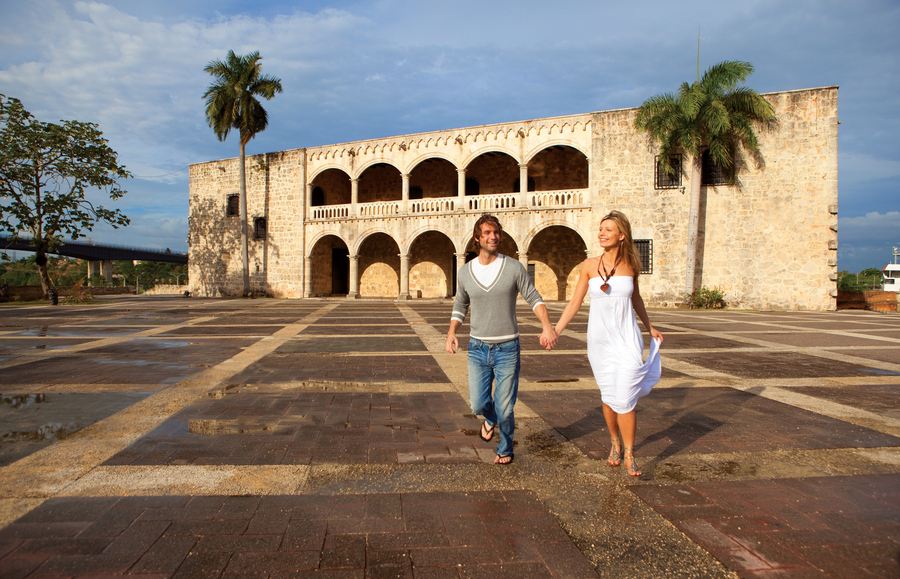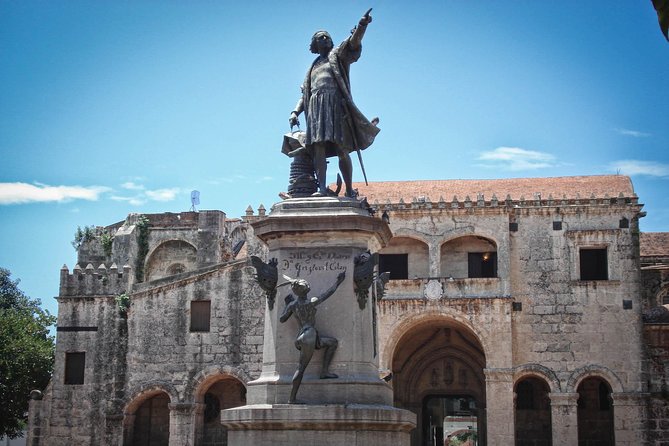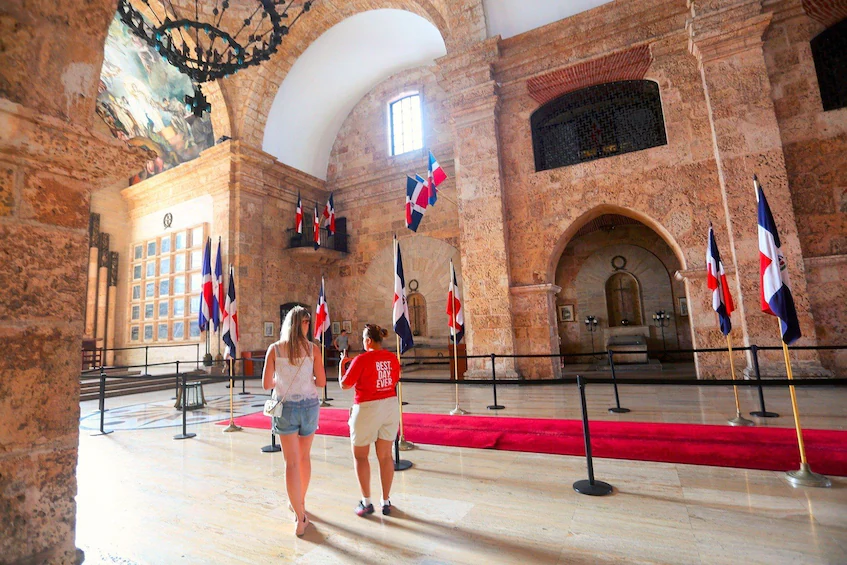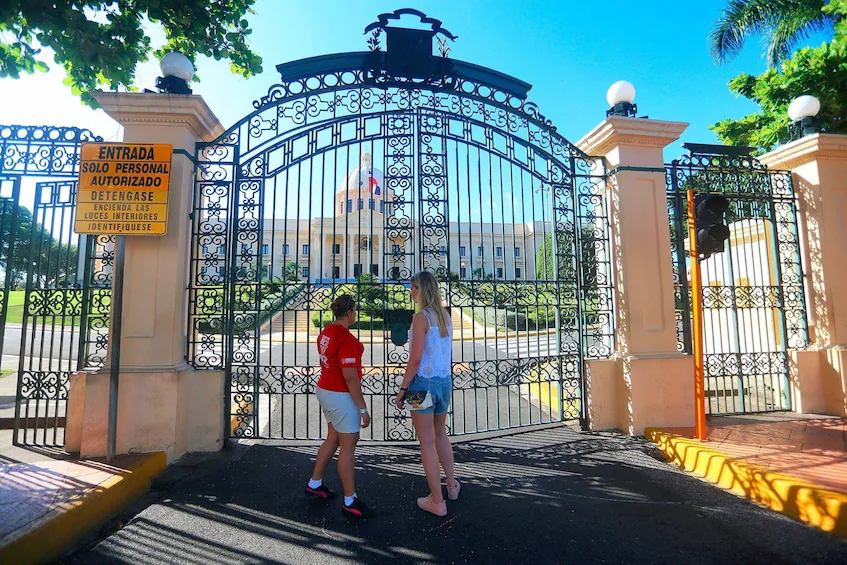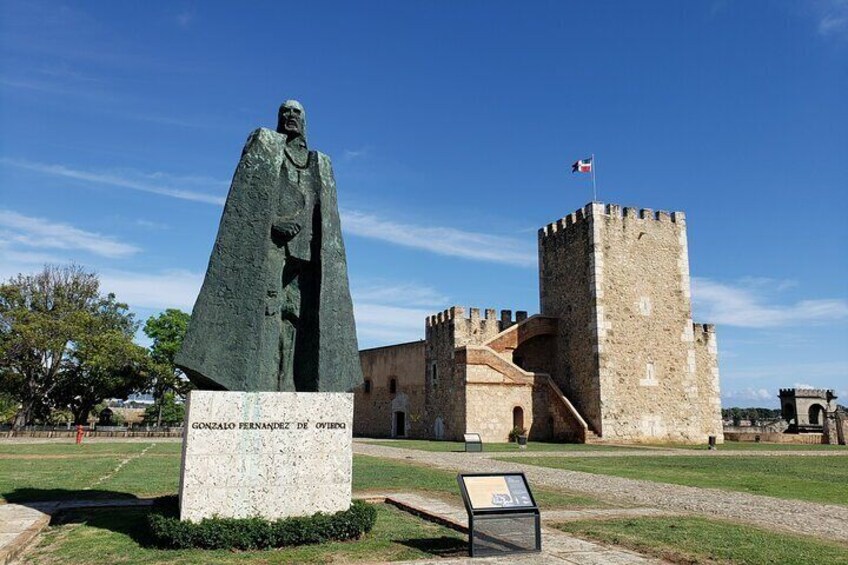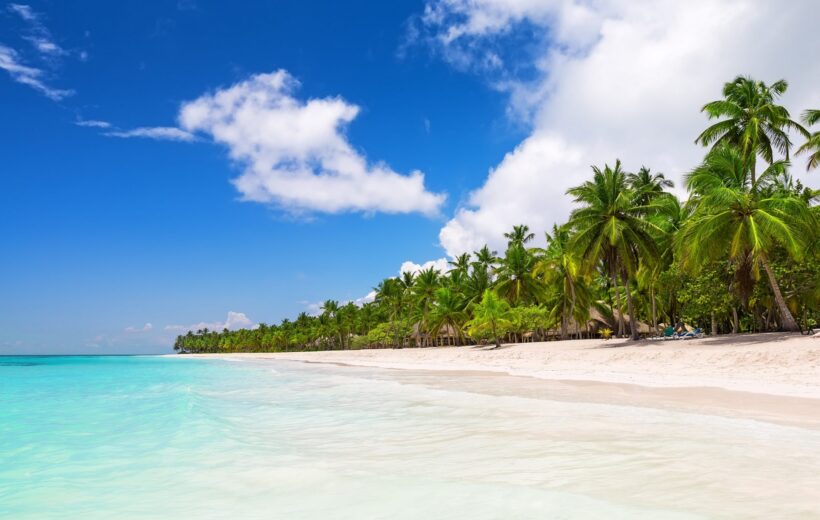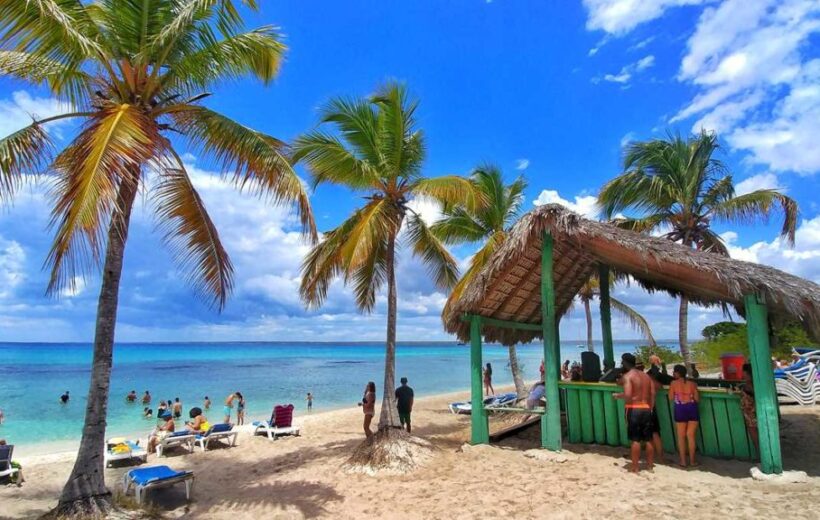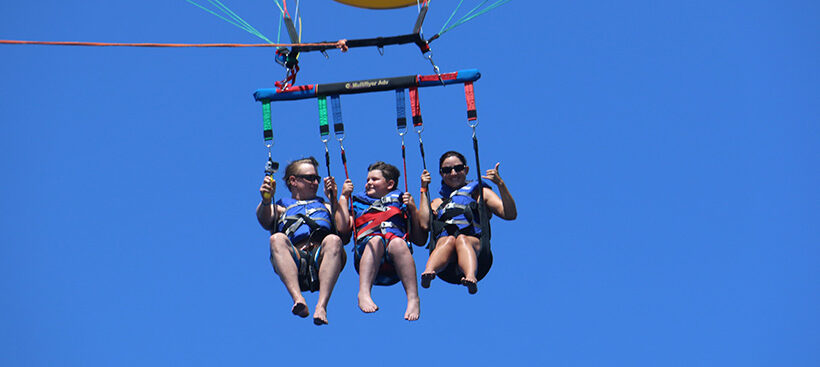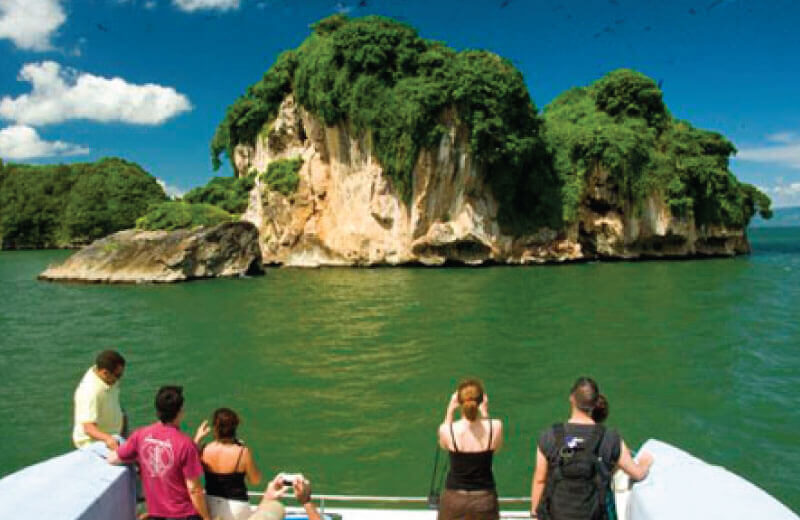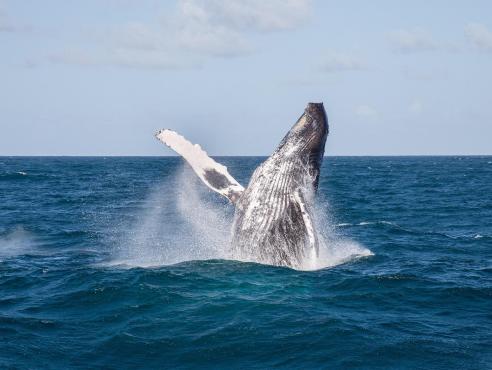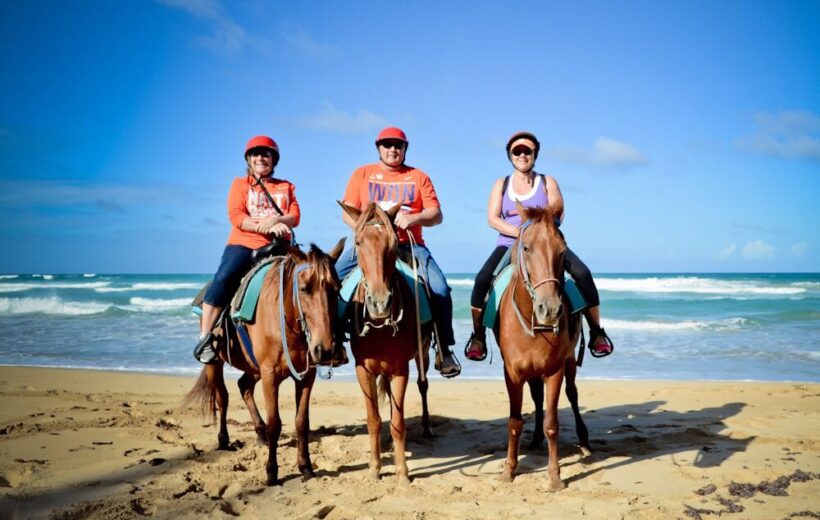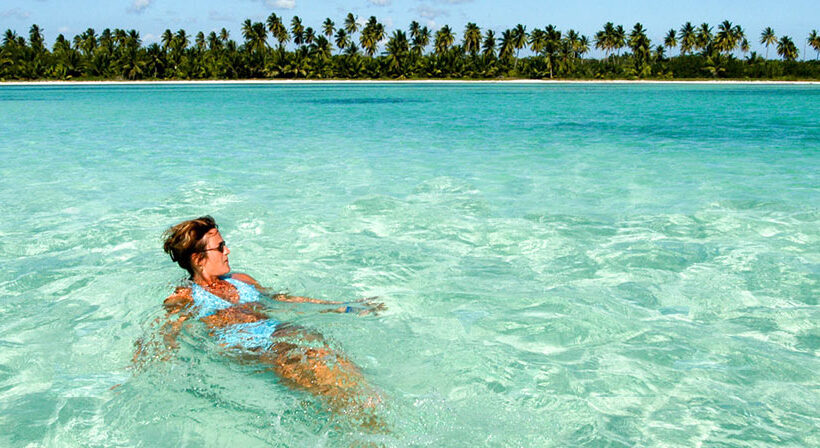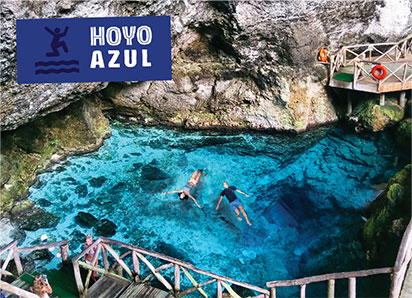Discovering the Rich Tapestry of Santo Domingo: A Guide to the Heart of the Dominican Republic
Discover the vibrant heartbeat of Dominican culture in Santo Domingo, the modern and dynamic capital of the Dominican Republic. Affectionately known as La Capital, this city seamlessly blends centuries-old architecture and history with contemporary features. From iconic landmarks and historic sites to expansive shopping malls, captivating art galleries, lively nightlife, and a thriving gastronomy scene, Santo Domingo offers a rich tapestry of experiences at the crossroads of tradition and modernity. Immerse yourself in the unique charm of this Caribbean metropolis, where every corner tells a story of the old and the new.
Table of Contents
ToggleEmbark on a captivating journey through the Colonial City, the inaugural European settlement in the Americas and a UNESCO World Heritage Site since 1990—a must for every traveler. This historic enclave unveils a pedestrian-friendly labyrinth of narrow streets adorned with architectural marvels spanning the 16th to early 20th centuries. Wander towards colonial edifices transformed into museums, shops, hotels, restaurants, and charming sidewalk cafés. Opt for a 45-minute tour aboard the Chu Chu Colonial train, engage a guide to traverse the first paved road of the Americas while narrating fascinating tales, or rent a bike for a leisurely exploration. Take a nature respite with a picnic on the expansive lawns of the National Botanical Garden, the Caribbean’s largest, or indulge in a sunset stroll along the Malecón for panoramic sea views, delectable roadside snacks, and vibrant people-watching. Immerse yourself in the rich tapestry of history and culture that the Colonial City unfolds.
Table of Contents
History
Before Christopher Columbus set foot on the shores of Hispaniola in 1492, the island bore the rich heritage of the native Taíno people. Known as Quisqueya, Kiskella (meaning the mother of all lands), and Ayiti (representing the land of the high mountains), the island held a vibrant cultural tapestry. Columbus later named it Hispaniola, encompassing the present-day territories of the Dominican Republic and Haiti. The island was divided into five chiefdoms—Marién, Maguá, Maguana, Jaragua, and Higüey—each governed by caciques (chiefs) named Guacanagarix, Guarionex, Caonabo, Bohechío, and Cayacoa, respectively. Explore the ancestral roots that laid the foundation for the complex history of this captivating island.
Established in 1493 when Spanish settlers first set foot on the island, and formally recognized on 5 August 1498, Santo Domingo stands as the oldest European city in the Americas. Bartholomew Columbus, brother of Christopher Columbus, founded the settlement and christened it La Nueva Isabela in homage to Queen Isabella I of Spain, with the settlement in the north already named La Isabela. In 1495, it underwent a name change to “Santo Domingo,” in honor of Saint Dominic. Gaining prominence as the “Gateway to the Caribbean,” Santo Domingo became the principal town in Hispaniola. It served as the launching point for pivotal expeditions, including Ponce de León’s colonization of Puerto Rico, Diego Velázquez de Cuéllar’s colonization of Cuba, Hernando Cortés’ conquest of Mexico, and Vasco Núñez de Balboa’s historic sighting of the Pacific Ocean. Uncover the historical legacy of Santo Domingo, a city that played a central role in shaping the course of the Americas.
In June 1502, Santo Domingo faced significant destruction at the hands of a powerful hurricane. Responding to this devastation, the new Governor Nicolás de Ovando orchestrated the reconstruction of the city, opting for a different location on the opposite bank of the Ozama River. Today, remnants of the original city layout and a substantial section of its defensive wall endure, offering a tangible link to history within the Colonial Zone. Acknowledging its historical significance, the Colonial Zone has been designated a World Heritage Site by UNESCO. Explore the enduring traces of Santo Domingo’s past, as witnessed in the well-preserved Colonial Zone.
Diego Columbus, the son of Christopher Columbus, arrived in Santo Domingo in 1509, taking on the roles of Viceroy and admiral. In 1512, Ferdinand II of Aragon instituted a Real Audiencia, appointing Juan Ortiz de Matienzo, Marcelo de Villalobos, and Lucas Vazquez de Ayllon as judges of appeal. The Laws of Burgos were introduced in 1514 by Pedro Ibanez de Ibarra, shaping regulations for Spanish colonies. Rodrigo de Alburquerque assumed the role of repartidor de indios and later appointed visitadores to ensure compliance with the laws. This period marked significant administrative and legal developments in the governance of Santo Domingo.
The first major slave revolt in the Americas unfolded in Santo Domingo in 1521, as enslaved Africans rebelled on Diego Columbus’s sugar plantation. In 1586, the privateer Sir Francis Drake seized the city, holding it for ransom. Drake’s capture marked a turning point, signaling the decline of Spain’s control over Hispaniola. The early 17th century saw further challenges with Spanish policies causing depopulation outside the capital. In 1655, an expedition from Oliver Cromwell attacked Santo Domingo, but local militias successfully repulsed the English force. The Treaty of Ryswick in 1697 acknowledged France’s dominion over the western third of the island (now Haiti). Throughout the 18th century, Santo Domingo’s privateers patrolled the Caribbean, capturing numerous enemy merchantmen.
From 1795 to 1822, Santo Domingo underwent multiple changes in ownership, mirroring the shifts in the broader colony. It was ceded to France in 1795. The city experienced a brief capture by Haitian rebels in 1801, was recovered by France in 1802, faced an unsuccessful invasion from Haiti in 1805, and was once again reclaimed by Spain in 1809. In 1821, Santo Domingo became the capital of an independent nation known as the Republic of Spanish Haiti after Criollo bourgeois, led by José Núñez de Cáceres, overthrew the Spanish crown. However, the nation was annexed by Haiti just two months later. These events led to significant instability and unrest, resulting in the loss of much of the Spanish-born peninsular population in the city and the colony.
Things to See in Santo Domingo:
Colonial Zone: The Colonial Zone, or “Zona Colonial” in Spanish, is the historic center of Santo Domingo, the capital city of the Dominican Republic. This charming neighborhood is a UNESCO World Heritage Site and a must-see destination for anyone visiting Santo Domingo. Here are some things to see, where to eat, and museums to visit while exploring the Colonial Zone.
Things to See:
- Alcazar de Colón: This impressive palace was built in the 16th century and was the residence of Diego Columbus, the son of Christopher Columbus. Today, it houses a museum showcasing colonial-era art and artifacts.
- Cathedral of Santa Maria la Menor: This stunning cathedral is the oldest in the Americas, dating back to the 16th century. Its Gothic architecture and impressive interior make it a must-see.
- Parque Colón: This beautiful park is located in the heart of the Colonial Zone and is a popular spot for people-watching and taking in the ambiance of the historic district.
- Fortaleza Ozama: This fortress was built in the early 16th century to defend the city against pirates and attacks. It is open to visitors and offers stunning views of the city and the Caribbean Sea.
- Calle El Conde: This pedestrian-only street is lined with shops, restaurants, and historic buildings. It’s a great place to stroll and take in the atmosphere of the Colonial Zone.
Where to Eat:
- Pat’e Palo: This restaurant is known for its creative fusion cuisine and elegant decor. It’s a great spot for a romantic dinner or special occasion.
- El Conuco: This traditional Dominican restaurant serves up classic dishes like sancocho (a hearty soup) and mofongo (a mashed plantain dish) in a cozy atmosphere.
- Mesón de Bari: This popular spot offers live music and a lively atmosphere along with delicious Caribbean and international cuisine.
Museums:
- Museum of the Royal Houses: This museum is housed in a restored colonial-era building and features exhibits on the history of the Dominican Republic and the Spanish colonial period.
- Museum of Modern Art: This museum showcases contemporary Dominican art and hosts temporary exhibitions from around the world.
- Amber Museum: This museum features an impressive collection of amber, including the largest known piece of Dominican amber, which contains a prehistoric mosquito with a drop of blood inside.
Overall, the Colonial Zone in Santo Domingo is a must-see destination for anyone interested in history, architecture, and culture. With its impressive buildings, delicious cuisine, and fascinating museums, there’s something for everyone in this charming neighborhood.
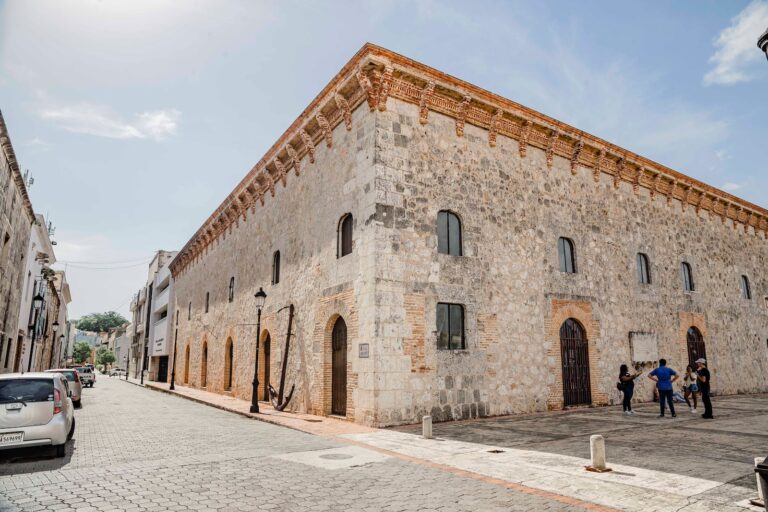
Malecon: The Malecon is a scenic oceanfront boulevard that stretches for several miles along Santo Domingo’s coast. It’s a great place to take a walk or bike ride, and there are plenty of restaurants, bars, and shops to explore along the way.
National Palace: The National Palace is the official residence of the President of the Dominican Republic and is a stunning example of neoclassical architecture. Guided tours are available, and visitors can explore the palace’s beautiful gardens and fountains.
Plaza de la Cultura: The Plaza de la Cultura is a cultural center that features several museums and galleries, including the Museum of Modern Art, the National Museum of History and Geography, and the National Theater.
Los Tres Ojos: Los Tres Ojos is a series of three interconnected caves that feature beautiful natural pools and stalactites. Visitors can take a boat tour of the caves and learn about their history and geology.
Hotels in Santo Domingo:
Santo Domingo, the capital city of the Dominican Republic, offers a wide variety of hotel options for visitors of all budgets and preferences. From luxurious resorts to affordable boutique hotels, there is something for everyone in this vibrant and historic city.
Luxury hotels such as the JW Marriott Santo Domingo and the Renaissance Santo Domingo Jaragua Hotel & Casino offer premium accommodations and amenities for those seeking a high-end experience. Both are located in the upscale Piantini neighborhood, known for its shopping and dining options. Prices for these hotels typically range from $200 to $400 per night.
For mid-range options, hotels like the Catalonia Santo Domingo and the Sheraton Santo Domingo provide comfortable accommodations with convenient locations. The Catalonia is situated in the Malecon area, overlooking the Caribbean Sea, while the Sheraton is located in the heart of the financial district. Prices for these hotels range from $80 to $150 per night.
Budget travelers can find great deals at hotels like the Hotel Conde de Peñalba and the Hotel Aladino. Both are located in the Colonial Zone, offering easy access to the city’s historic sites and museums. Prices for these hotels typically range from $30 to $70 per night.
No matter where you choose to stay in Santo Domingo, there are plenty of options to suit your needs and budget. With its rich history, vibrant culture, and beautiful architecture, Santo Domingo is an ideal destination for travelers looking for an authentic Caribbean experience.
Nightlife in Santo Domingo:
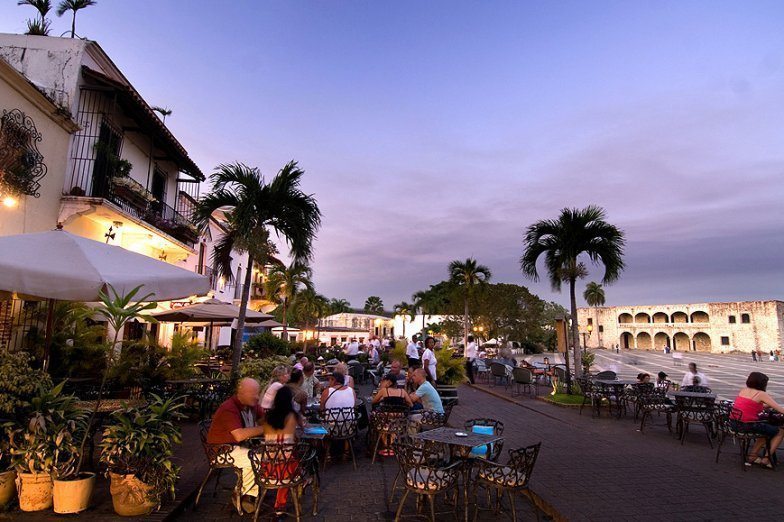
Santo Domingo, the capital city of the Dominican Republic, is known for its vibrant and exciting nightlife scene. From nightclubs and bars to live music venues and casinos, Santo Domingo has something for everyone. Here are some of the top places to go for a night out in the city:
Zona Colonial: This historic district is not only a great place to visit during the day but also a popular spot for nightlife. There are numerous bars and restaurants along the cobblestone streets, offering a mix of international and local cuisine. Some popular places to check out include Parada 77, La Alpargatería, and El Conde Bar.
Malecón: The Malecón is a seaside promenade that runs along the Caribbean Sea and is a popular spot for locals and tourists alike. There are several bars and restaurants along the way, offering stunning views of the ocean. Some popular places to check out include La Atarazana and Casa de Teatro.
Piantini: Piantini is a trendy and upscale neighborhood known for its high-end restaurants and bars. Some popular places to check out include Casa Avila, El Higuero, and Luiggi’s.
Gazcue: Gazcue is a historic neighborhood with a bohemian vibe, known for its live music venues and bars. Some popular places to check out include Nostalgia, La Espiral, and El Sartén.
Evaristo Morales: Evaristo Morales is a popular neighborhood with a mix of locals and tourists, known for its bars and nightclubs. Some popular places to check out include Jet Set Club, Vertygo 101, and La Enoteca.
When it comes to nightlife in Santo Domingo, the party doesn’t stop until the early hours of the morning. Make sure to pace yourself and stay safe while enjoying all the city has to offer.
Weather Santo Domingo:
Santo Domingo is a beautiful city located in the Caribbean region, specifically in the Dominican Republic. The city is known for its warm and tropical climate, which makes it a popular destination for tourists seeking sunny and pleasant weather all year round. In this article, we will discuss the weather in Santo Domingo, including temperature, humidity, and precipitation, to help you plan your trip to this vibrant city.
Temperature:
The temperature in Santo Domingo remains warm throughout the year, with average temperatures ranging between 25°C to 30°C (77°F to 86°F). The hottest months are from May to September, with temperatures averaging around 30°C (86°F), while the coolest months are from December to February, with temperatures averaging around 25°C (77°F). Even during the coolest months, the temperature remains mild and comfortable, making Santo Domingo a great destination to escape the cold winter weather in other parts of the world.
Humidity:
Santo Domingo has a tropical climate with high humidity throughout the year. Humidity levels range from 70% to 90%, which can make the temperature feel hotter than it actually is. Visitors should be prepared for the humidity by wearing lightweight and breathable clothing, staying hydrated, and taking breaks in air-conditioned spaces when needed.
Precipitation:
Santo Domingo experiences two main seasons: a dry season and a rainy season. The dry season runs from December to April, while the rainy season runs from May to November. During the rainy season, the city receives most of its rainfall, with occasional thunderstorms and heavy showers. However, even during the rainy season, the rainfall is usually limited to short bursts and doesn’t typically last all day. Visitors should be prepared with waterproof gear and be flexible with their outdoor plans during this time.
Overall, Santo Domingo has a warm and tropical climate, making it an ideal destination for travelers seeking sunny weather all year round. The temperature remains warm and comfortable, even during the coolest months, and visitors should be prepared for high humidity levels and occasional rain showers during the rainy season. Whether you’re planning to explore the city’s colonial architecture or relax on the beautiful beaches, Santo Domingo’s weather will not disappoint.
Things to do from Santo Domingo
Santo Domingo, the capital city of the Dominican Republic, offers plenty of opportunities for sightseeing, dining, and shopping. However, if you’re looking to escape the city and explore the surrounding areas, there are several exciting excursions that you can take. Here are some of the best excursions from Santo Domingo:
Los Tres Ojos: Located just a short drive from Santo Domingo, Los Tres Ojos (The Three Eyes) is a series of freshwater lakes nestled within a cave. Visitors can take a boat ride through the lakes, which are surrounded by lush vegetation and limestone formations. It’s a unique and serene experience that’s perfect for nature lovers.
Boca Chica: If you’re in the mood for some sun, sand, and sea, head to Boca Chica, a popular beach town located just 30 minutes from Santo Domingo. The beach is surrounded by palm trees and lined with restaurants and bars, making it a great spot for a day trip or a weekend getaway.
Altos de Chavon: This picturesque Mediterranean-style village is located about an hour and a half from Santo Domingo. It’s perched on a hill overlooking the Chavon River and features cobblestone streets, art galleries, and a 5,000-seat amphitheater. It’s a great spot for history and architecture buffs.
La Romana: If you’re willing to venture a bit further from Santo Domingo, head to La Romana, a bustling city located about two hours away. Here, you’ll find the Altos de Chavon artists’ village, the Casa de Campo resort, and plenty of shops, restaurants, and bars.
Saona Island: Saona Island is a stunning tropical island located off the southeastern coast of the Dominican Republic. Visitors can take a catamaran or speedboat from Santo Domingo to the island, where they can swim in crystal-clear waters, lounge on pristine beaches, and explore the island’s natural beauty.
No matter what your interests are, there’s an excursion from Santo Domingo that’s perfect for you. Whether you want to explore historic sites, soak up the sun on a beach, or immerse yourself in nature, there’s no shortage of options.
Finding the Best Santo Domingo Flights: Tips and Tricks
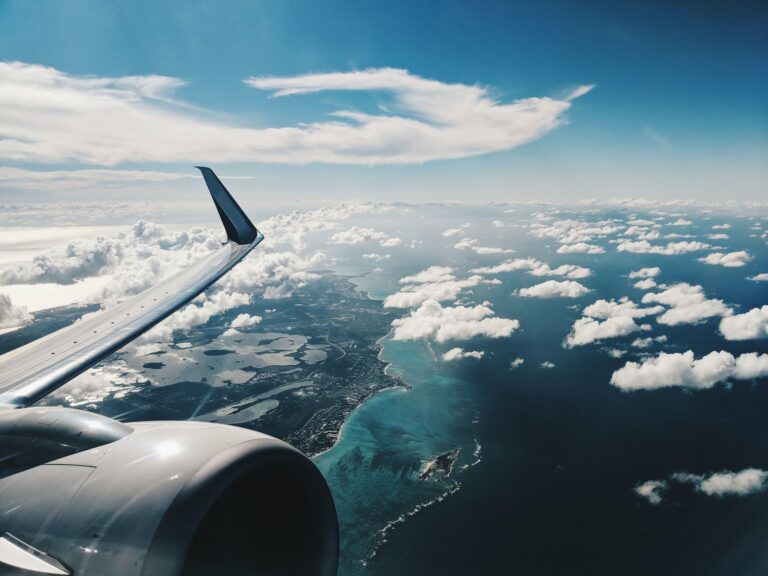
Santo Domingo is a vibrant city full of history, culture, and excitement. Whether you’re planning a leisurely vacation or a business trip, finding the right flights to Santo Domingo is crucial to ensure a smooth and enjoyable trip. In this article, we’ll explore some tips and tricks for finding the best Santo Domingo flights.
Flights to Santo Domingo:
The Las Américas International Airport (SDQ) is the primary airport serving Santo Domingo, and it is located about 30 minutes from the city center. Several airlines offer flights to Santo Domingo, including American Airlines, Delta Airlines, JetBlue, and United Airlines, among others.
Tips for Finding the Best Santo Domingo Flights:
Book your flights early: Booking your flights early can save you a lot of money, especially if you’re traveling during peak season or holidays. You can also set up price alerts to get notified of any price drops.
Be flexible with your travel dates: If you have a flexible travel schedule, try to book your flights during the off-season. This can help you find cheaper flights and also avoid the crowds.
Consider alternative airports: If you can’t find a good deal on flights to Santo Domingo, consider flying to other nearby airports like Punta Cana or Puerto Plata and then taking a domestic flight or a bus to Santo Domingo.
Use travel apps: There are several travel apps available that can help you find the best deals on flights to Santo Domingo. These include Skyscanner, Kayak, and Hopper, among others.
Check for discounts and promotions: Airlines and travel agencies often offer discounts and promotions on flights to Santo Domingo, so make sure to check for any ongoing deals or offers.
Santo Domingo Flight Prices:
The cost of flights to Santo Domingo can vary depending on several factors, including the time of year, the airline, and how far in advance you book your tickets. On average, a round-trip flight to Santo Domingo can cost anywhere from $300 to $800 or more, depending on your departure location and travel dates.
Some of the airlines that offer flights to Santo Domingo, along with their average prices for round-trip tickets, include:
- American Airlines: $400-$700
- Delta Airlines: $450-$800
- JetBlue: $300-$600
- United Airlines: $500-$800
In conclusion, finding the best Santo Domingo flights requires some planning and research. By following these tips and tricks, you can save money and ensure a hassle-free trip to this beautiful city. Happy travels!
Frequently Asked Questions
What is Santo Domingo? A: Santo Domingo is the capital city of the Dominican Republic.
What language do people speak in Santo Domingo? A: The official language of Santo Domingo is Spanish.
What is the currency used in Santo Domingo? A: The currency used in Santo Domingo is the Dominican Peso (DOP).
Is Santo Domingo safe for tourists? A: Santo Domingo is generally safe for tourists, but it is important to take normal safety precautions such as avoiding isolated areas at night and not carrying large amounts of cash.
What is the weather like in Santo Domingo? A: The weather in Santo Domingo is warm and tropical year-round, with average temperatures ranging from the mid-70s to mid-80s Fahrenheit.
What are some popular attractions in Santo Domingo? A: Popular attractions in Santo Domingo include the Colonial Zone, the Alcazar de Colon, the Cathedral of Santa Maria la Menor, and the National Palace.
What is the best way to get around Santo Domingo? A: The best way to get around Santo Domingo is by taxi or public transportation such as the Metro and bus system.
What are some traditional dishes in Santo Domingo? A: Traditional dishes in Santo Domingo include sancocho (a hearty stew), mangú (mashed plantains), and chicharrones (fried pork rinds).
What is the nightlife like in Santo Domingo? A: The nightlife in Santo Domingo is vibrant and diverse, with a range of bars, clubs, and live music venues.
What is the best time of year to visit Santo Domingo? A: The best time to visit Santo Domingo is between November and March when the weather is cooler and less humid. However, this is also peak tourist season, so prices may be higher.

